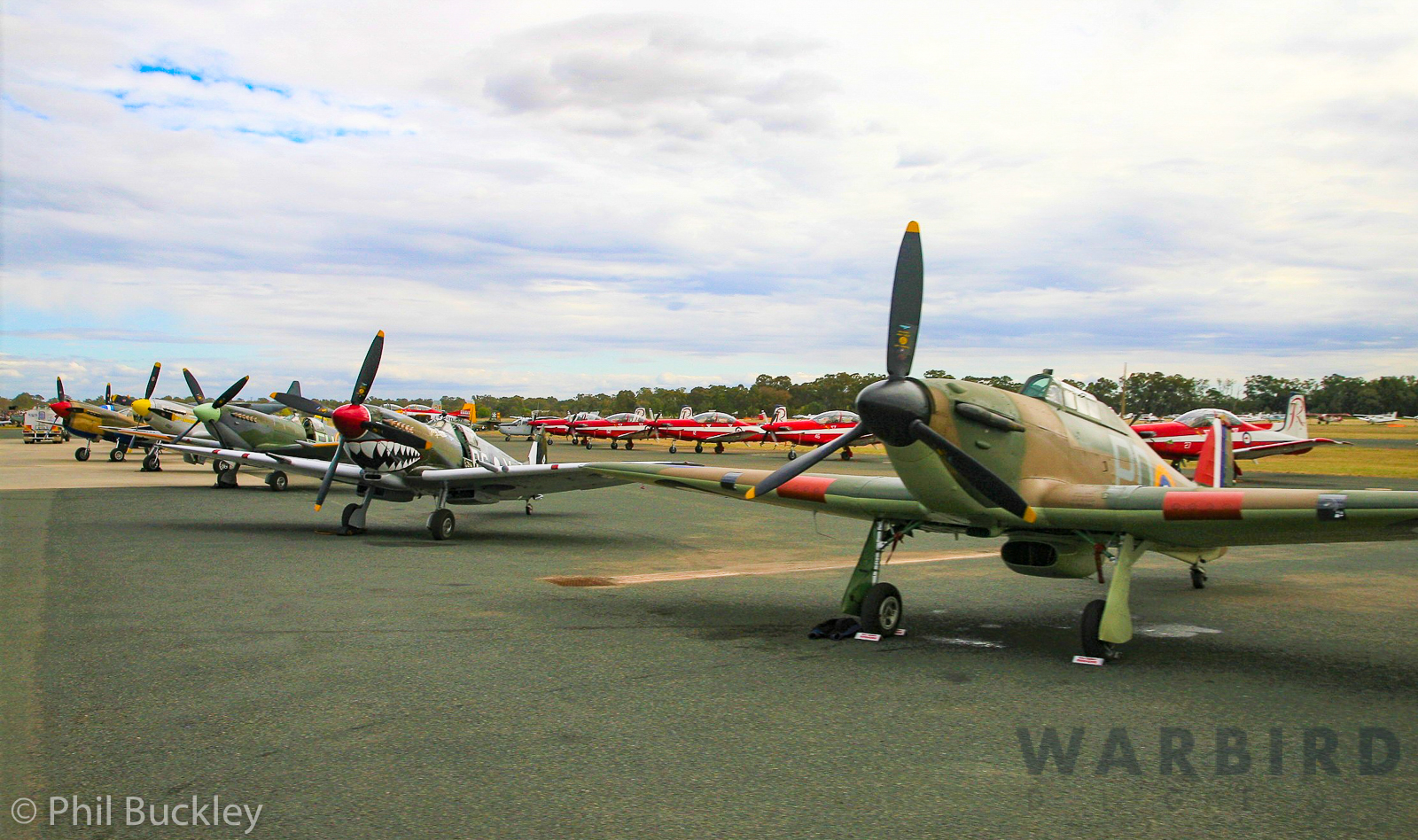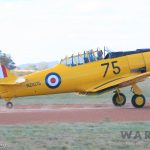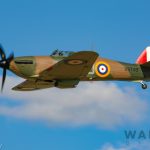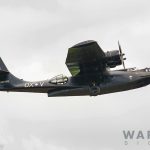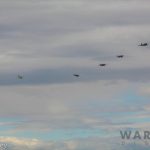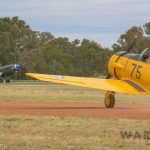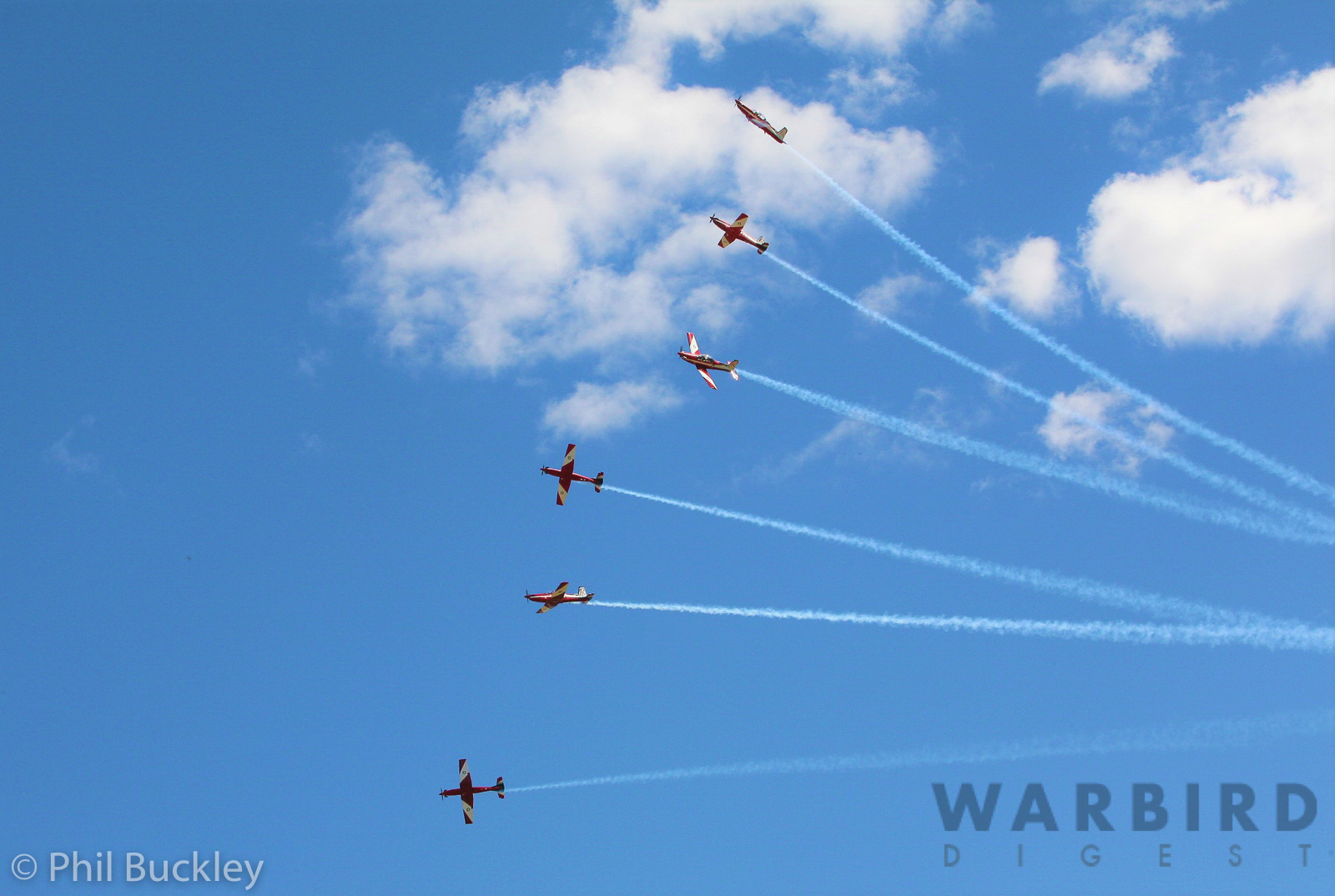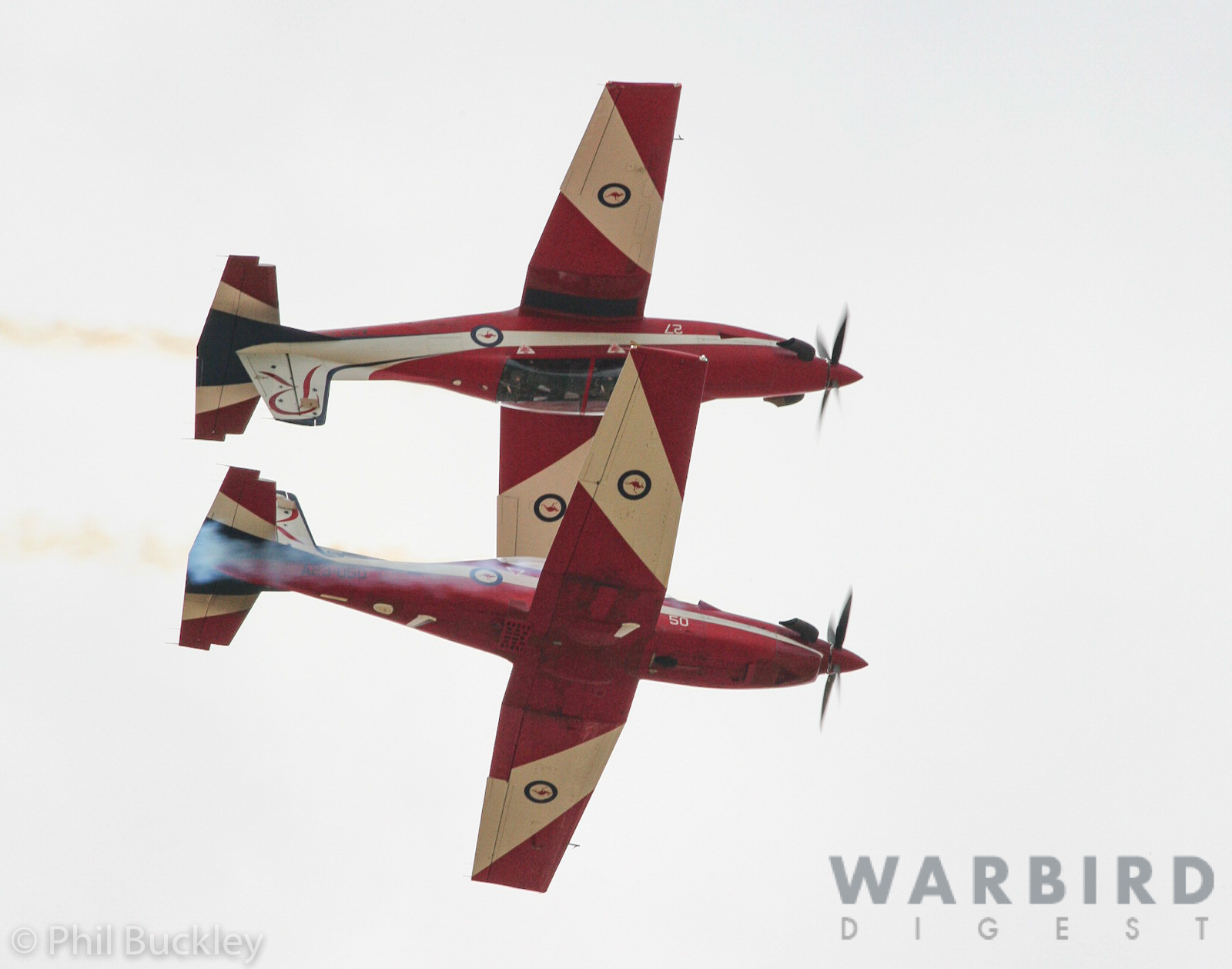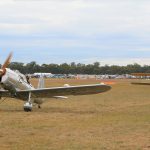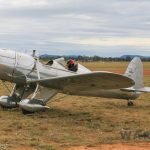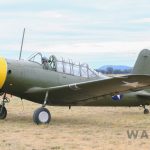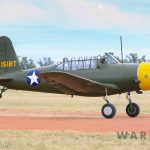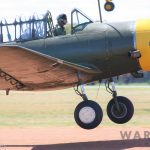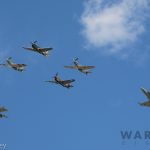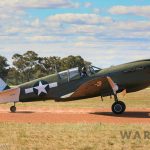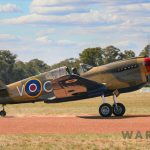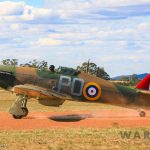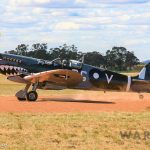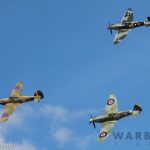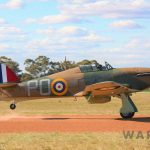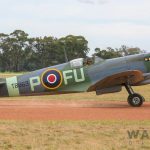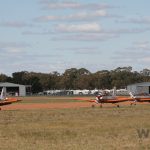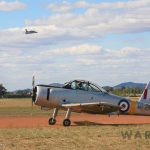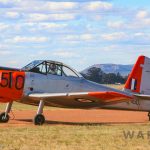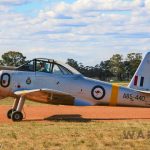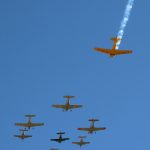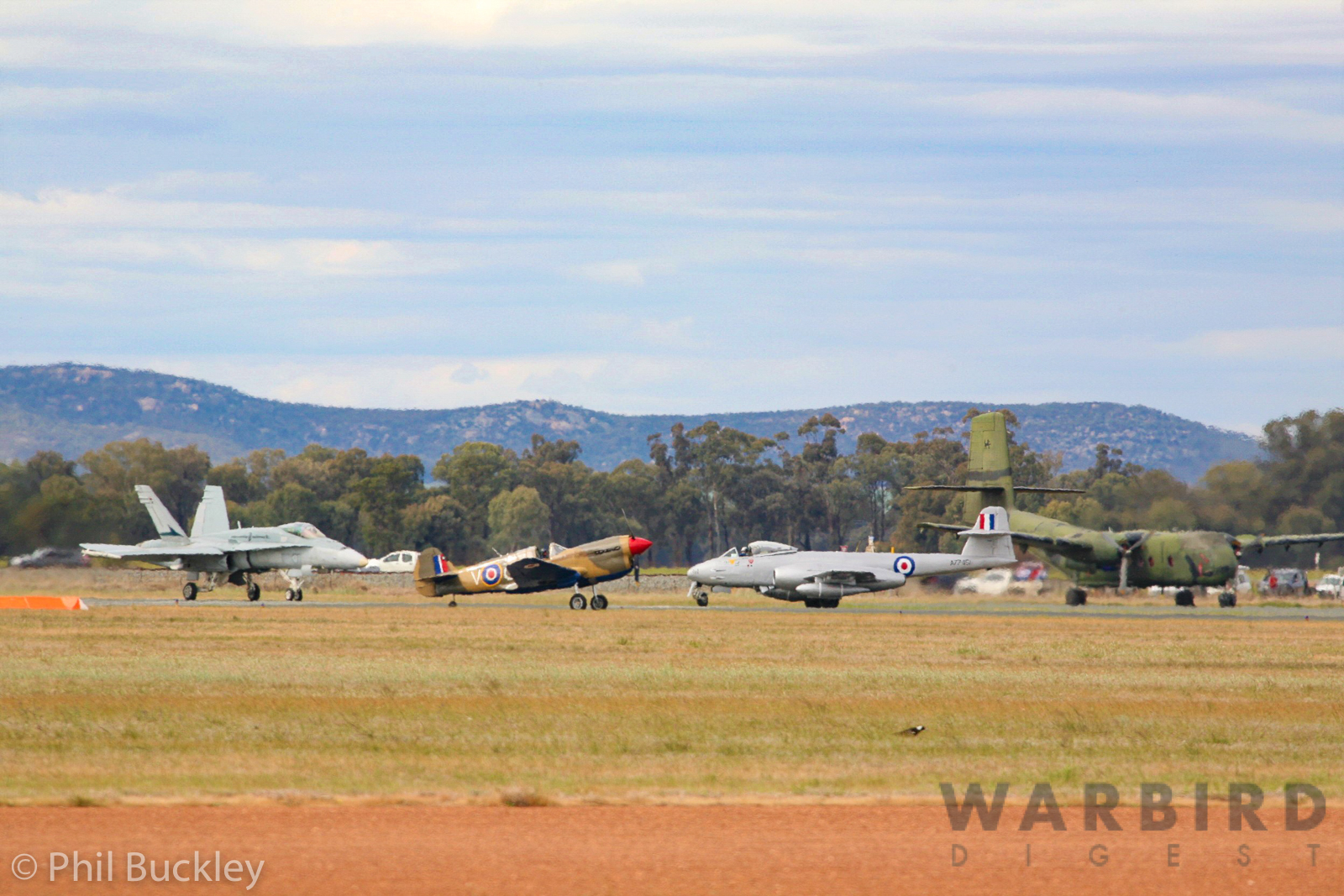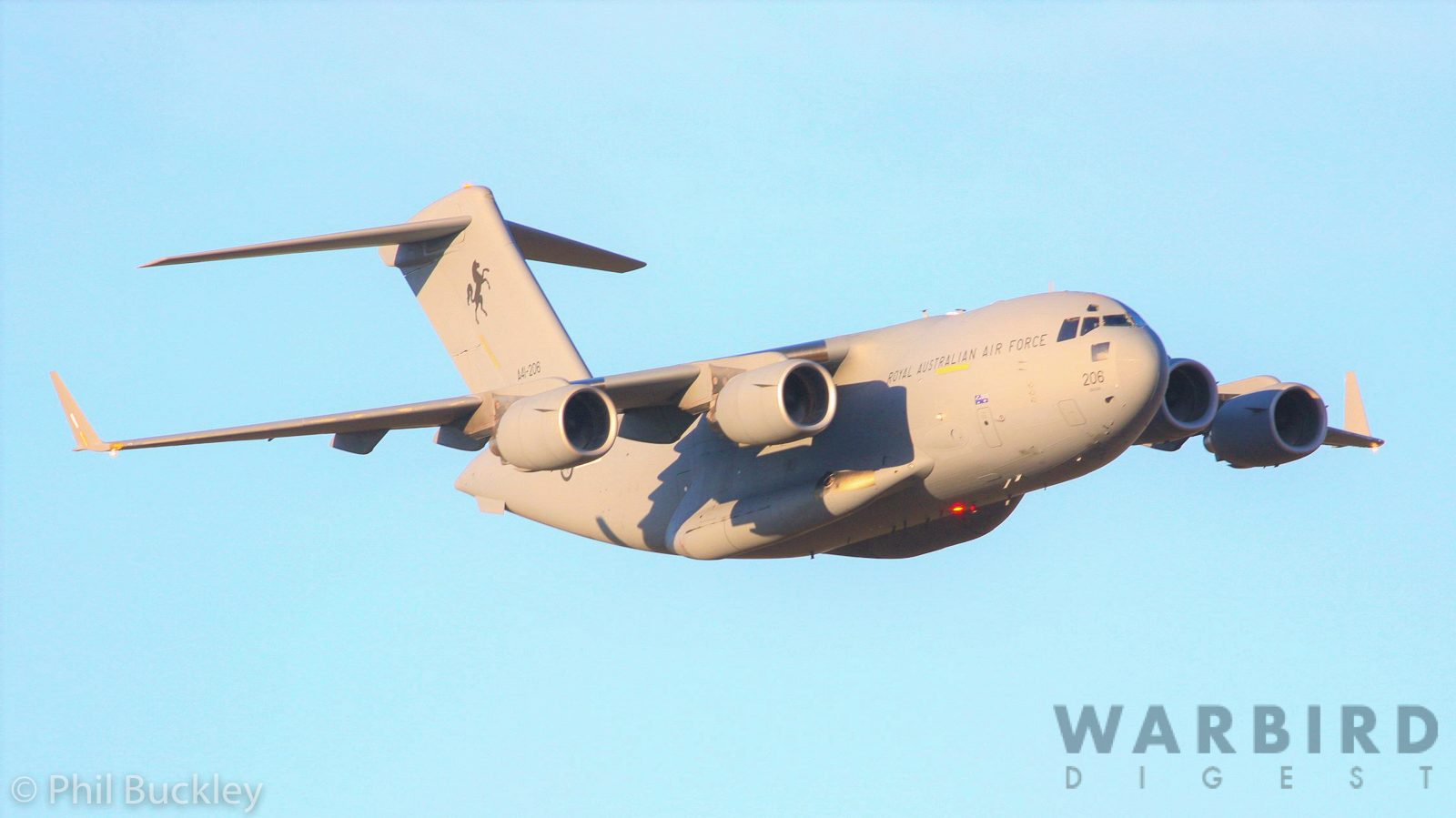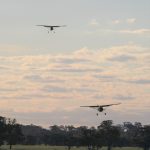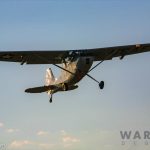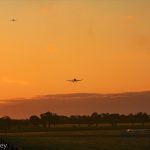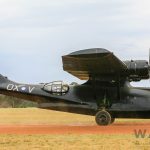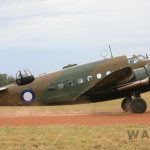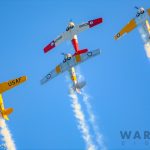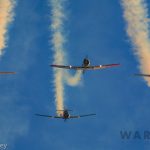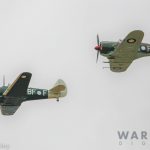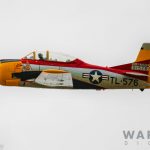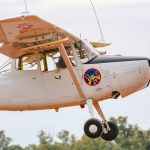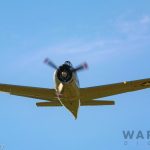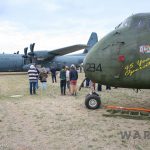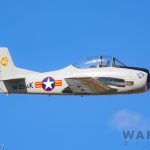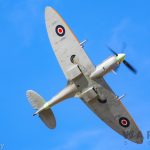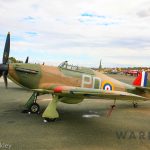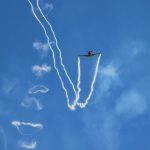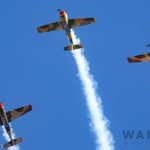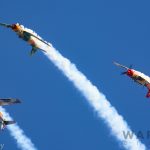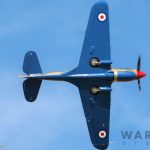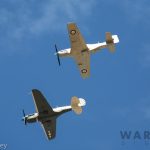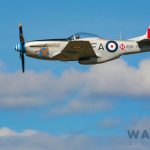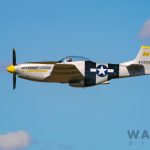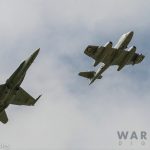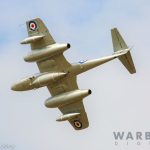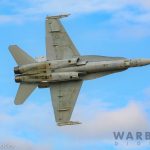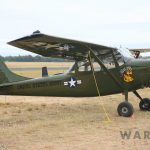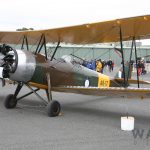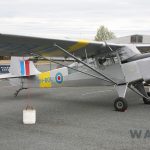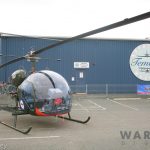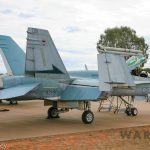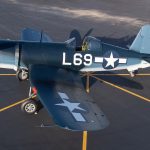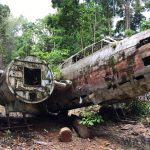Temora Aviation Museum – Warbirds Down Under Air Show 2018
The weekend of 12-13 October 2018 witnessed the eagerly awaited Temora Aviation Museum’s Warbirds Down Under Airshow in Temora, New South Wales. This year it comprised a Friday afternoon/evening performance and a full-day’s air show on the Saturday. 2018 also saw the show moved to October, a much welcomed change as November is seriously hot summer weather in this part of Australia. October’s weather was mild and far more acceptable for most. The weather was beautiful on Friday, with sunny skies followed by a nice sunset, which provided excellent photographic opportunities.
- Trainers – CAC Wirraway, DH-82A Tiger Moth, Ryan STM and Ryan PT-22.
- Fighters – CA-13 Boomerang, P-51 Mustangs, Spitfire Mk XVI, P-40 Kittyhawks, Spitfire Mk VIII and Hawker Hurricane.
- Bombers and Seaplanes – Lockheed Hudson and PBY Catalina.
- Korean War era Jets – Gloster F.8 Meteor.
- Vietnam era – T-28 Trojans, Cessna O-2A, Cessna O-1 Birddogs, DHC-4A Caribou and Cessna A-37B Dragonfly.
- RAAF trainers – CAC Winjeels and CT-4s.
- Foreign Trainers – Yak-52s and CJ-6 Nanchangs.
- Present-day RAAF – RAAF Roulettes demonstration team (using their PC-9/As for their last ever PC-9 display), Hawk 127s, Boeing E-7A Wedgetail, F/A-18A Hornet, C-130J Hercules and C-17A Globemaster.
Doug Hamilton’s former RNZAF Harvard NZ1075. (photo by Phil Buckley) The Hurricane during her display. (photo by Phil Buckley) The Black Cat raising her gear after take off. (photo by Phil Buckley) A loose formations of two Mustangs, two Kittyhawks and two Spitfires. (photo by Phil Buckley) The Harvard taxiing out while a P-40 prepares for takeoff. (photo by Phil Buckley)
FRIDAY EVENING AIRSHOW
The Royal Australian Air Force’s aerobatic display team, “The Roulettes” opened the Friday show. This performance marked their final public outing flying the Pilatus PC-9/A. The last of the Roulette’s operational PC-9s included A23-012, 025, 027, 046, 050, 052 and 063. Currently, the RAAF is retiring their PC-9 fleet. Six of these aircraft will be allocated for heritage preservation, with ten further examples going on to training and research purposes. The military will sell off the remainder, potentially in 2019, to other governments and/or private buyers.
Up next on Friday were familiar WWII-era trainers which included a Ryan PT-22, Ryan STM S2 and Vultee BT-13 Valiant.
The next act displayed ‘a little bit’ more power with a heritage flight featuring WWII-era fighters alongside two Royal Australian Air Force F/A-18As. The formation included Doug Hamilton’s Curtiss P-40N Warhawk 42-104986, Fighter Pilot Adventures’ North American P-51D Mustang 45-11526 and Ross Pay’s Curtiss P-40E 41-25109. After the flight split up, each of the aircraft gave separate displays, thrilling the crowd.
The next warbird taking part gained many people’s attention as it is the only airworthy Hawker Hurricane in Australia, the Scone-based example operated by Pays Air Service for a local owner. The Canadian-built Hawker Hurricane Mk.XII (RCAF 5481) flew in formation with two of the Temora-based Spitfires (Mk.XVI TB863 and Mk.VIII A58-758), providing an interesting comparison between the two most famous British-designed WWII fighters. The WWII fighters then departed the scene, and in came the RAAF trainer flight comprising of the RAAF Museum’s North American Harvard alongside assorted CAC Winjeels and CT-4 Parrots.
Shortly afterwards, the Temora Aviation Museum’s CA-13 Boomerang A46-122 made an appearance. This type was an RAAF stalwart in the early, dark days of WWII in the Pacific, albeit as a stop-gap fighter of indigenous design and manufacture. The Boomerang did prove itself capable in the ground-attack role later in the war. Once nearly extinct in preservation, the Boomerang is making a strong come-back with ten or so potential flyers presently under restoration, and possibly more to come.
Next up, one of the rarest of flying jet warbirds, the Temora Aviation Museum’s Gloster Meteor F.8 VZ467, made an appearance to pay homage to the RAAF’s participation in the Korean War. She currently flies in the markings of the RAAF’s most famous Korean War pilot – Sgt. George Hale. Hale engaged a pair of MiG-15s on one of his combat sorties in a 77 Squadron RAAF Meteor. He reportedly scored hits on both aircraft, being credited with one shot down, and the other damaged on 27th March 1953, the last time an RAAF aircraft officially engaged in air-to-air combat.
The RAAF supplied a few big items to the air show with No.2 Squadron flying one of their E-7A Wedgetails down from RAAF Base Williamtown for a few passes. Next up was a C-17A Globemaster III from No.35 Squadron at RAAF Base Amberley which undertook a few passes before departing north for home.
As the sun settled into the country paddocks, a few Vietnam War-era Cessna O-1 Birddogs did some flying displays, showing off the capabilities of this small but nimble and often overlooked type. They were outdone though when Temora’s recently-repainted Cessna A-37 Dragonfly ripped up the sky in a memorable and noisy display, complete with smoke-trails. The well known Southern Knights Formation Aerobatic Team concluded the air show with assorted formation passes in their fleet of North American T-6 Texan/Harvards.
SATURDAY – FULL AIRSHOW
The Saturday show was slightly longer and took place under cloudy skies for most of the event, but the sun showed up towards the end. The RAAF Roulettes opened the day’s action and then the rumble and roar of mighty V12s followed when four WWII fighters took off; a Kittyhawk, Hurricane, Spitfire and Mustang showing the elegant, yet deadly designs upon which Allied victory had depended. After the heavy iron, the vintage trainer trio again took to the skies, followed by the RAAF trainer flight featuring CT-4s, CAC Winjeels and the RAAF Museum’s Harvard in a nice and noisy display. Once this formation concluded, a T-6 and CT-4 made solo performances. The Southern Knights took to the air again and thrilled the crowd with their dynamic formation passes over the airport. They were succeeded by the Temora-based CA-16 Wirraway and CA-13 Boomerang made formation and solo displays. For a short time, these two types formed essential elements of RAAF front line defense of Australia. The Historical Aircraft Restoration Society’s beloved “Black Cat” PBY Catalina then took to the skies. The Temora-based Lockheed Hudson, the sole airworthy example of her kind, joined the Black Cat in the skies soon after.
A growing crowd favorite in Australia is a focus on RAAF and USAF aircraft from the Vietnam War. The O-1 Bird Dog, 0-2 Skymaster, T-28 Trojan, DHC-4 Caribou and A-37 Dragonfly are some of the regular performers from this era, all of which were on hand at Temora.
Up next was another formation flight of iconic World War II fighters with both of the Temora-based Spitfires flying with the Scone-based Hawker Hurricane. Unfortunately, the Hurricane experienced a problem and had to land quickly, but the two Spitfires continued their performance, finishing the display.
The next aircraft up was a fast one, and fast it was! This special Yak-3U, nicknamed Steadfast… well it really moves…and this is amply proven by the 9 world records it has won. The aircraft has a spectacular high-energy aerobatics routine. Intriguingly, her wingtip smoke generators frequently end up forming “smoke circles”… despite them initially coming out as two independent smoke trails. This high speed act was complemented by the much slower Russian Roolettes display team putting their Yak-52 and Nanchang CJ-6s through various formation aerobatics.
The RAAF were involved next with their BAe Hawk 127 trainer: noisy, fast and effective. Now nearly 18 years into service, RAAF Hawks have trained hundreds of students in the art of fast-jet flying. Another C-17 then contributed some noise and grey metal to the event with a few regal passes. Mixed in next came more vintage V12 piston power with two Spitfires, two Kittyhawks and two Mustangs all flying a series of trail formation passes.
A Heritage Flight ended the show with a formation flight from the Temora-based Gloster Meteor accompanied by an RAAF F/A-18 Hornet. The Hornet closed out the event with a fine solo handling display from her pilot, Squadron Leader Phil Eldridge.
WRAP UP
When asked for comment on how the show faired, representatives from the Temora Aviation Museum reported to your author, “It was a huge success, with crowd numbers similar to the 2015 event, with just under 20,000 spectators. The Friday crowd was large, but the Saturday crowd was a bumper crowd. Thanks to the many thousands of spectators who attended Warbirds Downunder 2018, the move to October seemed to be well received, and although the winds proved challenging on Friday, Saturday’s weather was favorable for such a memorable event. We would like to thank all of the warbird aircraft owners for bringing their assets along to Temora, and the RAAF for turning out in numbers. We have received an overwhelming response of positive comments and are already debriefing, analysing feedback and planning for a bigger and better Warbirds Downunder 2020.”
Warbird Digest and Down Under Aviation News would like to thank the TAM’s General Manger Peter Harper for the media access and the opportunities given to us to cover this event. Also sincere thanks to all the warbird owners and organisations, TAM volunteers, RAAF and other support personnel across the airport who helped make the event worthwhile to attend.
We would very much like to thank Phil Buckley and his site Down Under Aviation News for bringing us this story. We had hoped to run it some time ago, and do apologize for the delay.







